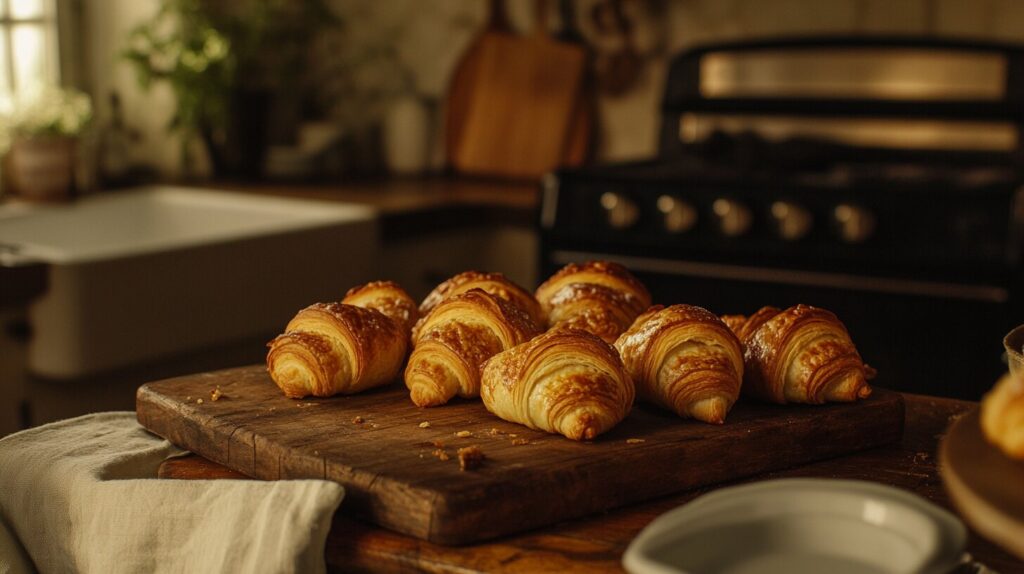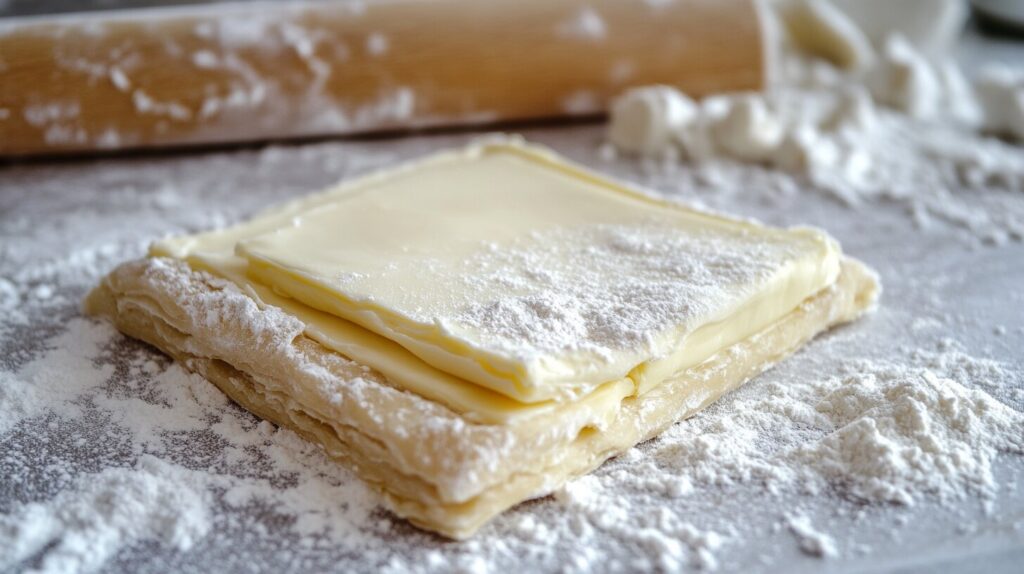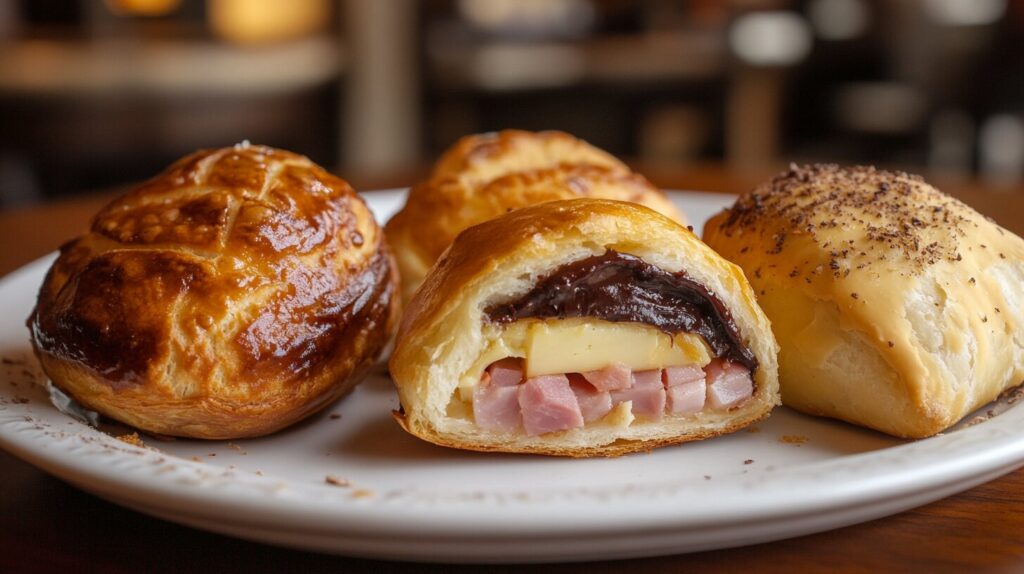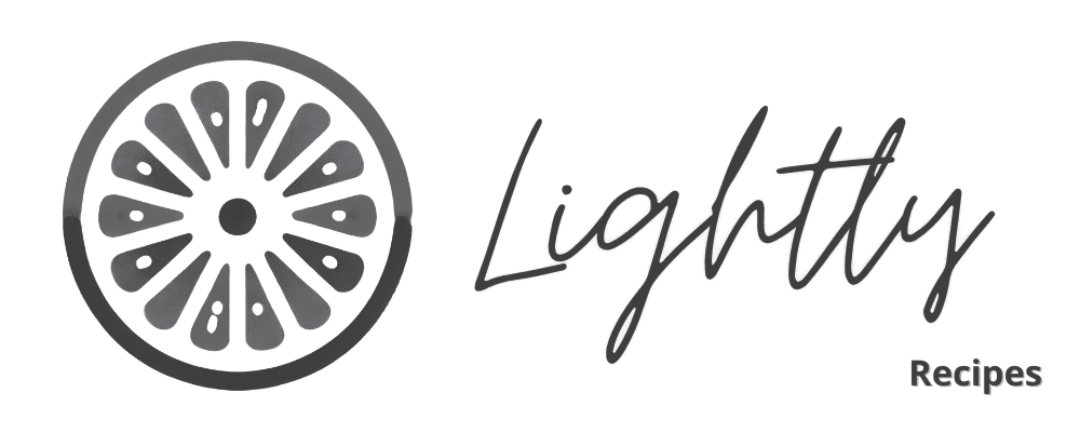
Imagine a pastry so creamy, buttery, and flaky that it could make even a Swiss alpine cow pause mid-grazing to say “Guten Tag, das ist fantastisch!” That’s the magic of Gipfeli , a humble yet mighty Swiss treat that’s been delighting crowds for centuries. Picture this: It’s 6 a.m. in a cozy Zurich kitchen, and the aroma of cinnamon and butter wafts through the air. A grandma rolls out dough with the precision of a Swiss watchmaker, and suddenly—crinkle, crinkle —the oven erupts with golden, crescent-shaped wonders. Gipfeli isn’t just a recipe; it’s a love letter to simplicity.
Now, before you panic at the thought of “Swiss” precision, let us reassure you: This is a no-fuss recipe. Unlike its cousin, the croissant (which requires laminating dough for hours), Gipfeli is a 30-minute miracle. Perfect for breakfast, brunch, or even a sweet midnight snack, it’s the kind of dish that makes your family beg for seconds. Furthermore , if you’ve ever enjoyed our guide on how to make the best croissants at home , you’ll love the Gipfeli’s streamlined approach.
Table of Contents
What is Gipfeli ?
Ah, Gipfeli —say it with us: Gip-FEH-lee . Sounds like a secret handshake, doesn’t it? Truth is, this pastry’s name is a linguistic love note. The word “Gipfel” means “peak” in German, and these pastries are the peak of Swiss baking. But why “Gipfeli”? Well, legend has it that a baker in the 1800s, after a long day of climbing the Alps (because why not?), declared, “This dough needs a name as high as the mountains!” And thus, the Gipfeli was born.
Now, we’re not saying this is historically accurate—we’re the ones who invented that story—but isn’t it fun? Additionally , if you’re curious about other Swiss pastries like Nussgipfel or Mandelgipfel , check out our guides on what is a Nussgipfel and what is a Mandelgipfel . The real secret? It’s all about layers. Think of it as a buttery, cinnamon-dusted croissant’s more laid-back cousin.
Why You’ll Love This Gipfeli Recipe
1. It’s a Flavor Explosion in Every Bite
Gipfeli isn’t just flaky—it’s extra flaky. The secret? A buttery dough folded into layers so thin they could rival a Swiss bank’s confidentiality clauses. Each bite bursts with cinnamon, sugar, and the faintest hint of vanilla, making it feel like a hug from a Swiss grandmother.
2. Budget-Friendly Luxury
Why spend $5 on a bakery croissant when you can make 12 Gipfeli for the price of a latte? This recipe uses pantry staples: flour, butter, sugar, and spices. No fancy equipment needed—just a rolling pin and a dash of patience.
3. Customizable to Your Heart’s Content
Think of Gipfeli as a blank canvas. Mix in chocolate chips, nuts, or even a drizzle of honey for a sweet twist. Moreover , if you’re experimenting with flavors, our guide on cinnamon types and uses can help you pick the perfect spice blend.
Pro Tip: Pair it with a cup of Swiss-style milk coffee for a total Alps experience.
How to Make Gipfeli

Quick Overview
Gipfeli is a 30-minute masterpiece. You’ll mix a simple dough, roll it into a rectangle, sprinkle with cinnamon-sugar, fold it like a letter, and slice it into crescents. The key? Don’t overwork the dough. It’s delicate, like a Swiss mountain breeze.
Key Ingredients for Gipfeli Recipe
- 2 cups all-purpose flour
- 1/4 cup granulated sugar
- 1 tsp cinnamon
- 1/2 tsp vanilla extract
- 1/2 tsp salt
- 1/2 cup (1 stick) unsalted butter, softened
- 1/4 cup milk
- Optional toppings: Cinnamon-sugar mix, chocolate chips, or chopped nuts
Photo: A cozy kitchen setup with flour, butter, and cinnamon ready to go.
Step-by-Step Instructions

- Mix the Dough: In a bowl, cream butter and sugar until fluffy. Add vanilla, salt, and milk. Gradually mix in flour until a soft dough forms. Cover and chill for 15 minutes.
- Roll and Season: Roll the dough into a 12×12-inch rectangle. Sprinkle with cinnamon-sugar mix (1 tbsp sugar + 1 tsp cinnamon).
- Fold Like a Swiss Master: Fold the dough into thirds, like closing a letter. Rotate 90 degrees and roll again into a rectangle. Repeat once more.
- Slice and Shape: Cut into 1-inch strips, then twist each strip into a crescent shape. Place on a baking sheet.
- Bake: Preheat oven to 350°F. Bake for 15-20 minutes until golden.
What to Serve Gipfeli With
- Coffee or Tea: Pair with a robust espresso or Swiss-style milk coffee.
- Jam or Honey: A dollop of apricot jam adds a sweet contrast.
- Breakfast Platter: Serve with fresh berries, yogurt, or scrambled eggs for a hearty meal.
- Dessert Option: Top with whipped cream and a sprinkle of powdered sugar.
Additionally , if you’re hosting a brunch, consider pairing Gipfeli with our hash brown potato soup for a comforting spread.
Top Tips for Perfecting Gipfeli
- Don’t Overmix the Dough: Overworking it will make the pastry tough.
- Use Cold Butter: Chilled butter creates those iconic flaky layers.
- Experiment with Flavors: Try adding lemon zest or orange zest for a citrus twist.
- Avoid Overbaking: Gipfeli should be golden, not burnt. Check at 15 minutes.
- Freeze Dough: Roll out the dough, cut into strips, and freeze for a quick breakfast later.
Furthermore , if you’re a baking novice, our guide on mastering French pastries offers foundational tips that apply to Gipfeli too.
Storing and Reheating Tips
- Storage: Keep in an airtight container at room temperature for up to 3 days.
- Freezing: Freeze baked Gipfeli on a tray, then transfer to a freezer-safe bag. They’ll stay fresh for 2 months.
- Reheating: Warm in a 300°F oven for 5-7 minutes or toast in a pan for crispiness.
In conclusion , if you’re short on time, Gipfeli’s quick prep makes it a winner. For more quick breakfast ideas, check out our best croissant hacks .
Final Thought

Gipfeli isn’t just a recipe—it’s a celebration of simplicity, flavor, and the joy of sharing a meal with loved ones. Whether you’re a baking novice or a seasoned chef, this Swiss classic will elevate your kitchen game. So, grab your rolling pin, and let’s make some Gipfeli magic!
Gipfeli Recipe
Equipment
- Oven
- Rolling Pin
Ingredients
Dough
- 2 cups all-purpose flour
- 1/4 cup granulated sugar
- 1 teaspoon cinnamon
- 1/2 teaspoon vanilla extract
- 1/2 teaspoon salt
- 1/2 cup unsalted butter softened
- 1/4 cup milk
Optional Toppings
- cinnamon-sugar mix 1 tbsp sugar + 1 tsp cinnamon
- chocolate chips optional
- chopped nuts optional
Instructions
- In a bowl, cream butter and sugar until fluffy. Add vanilla, salt, and milk. Gradually mix in flour until a soft dough forms. Cover and chill for 15 minutes.
- Roll the dough into a 12×12-inch rectangle. Sprinkle with cinnamon-sugar mix. Fold the dough into thirds, rotate 90 degrees, and roll again. Repeat once more.
- Cut into 1-inch strips, twist into crescent shapes, and place on a baking sheet.
- Bake at 350°F (175°C) for 15-20 minutes until golden. Cool on a wire rack.

